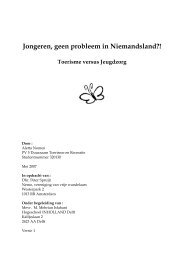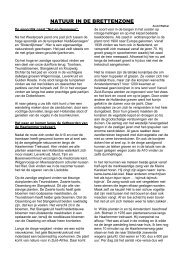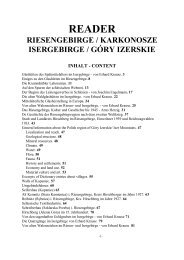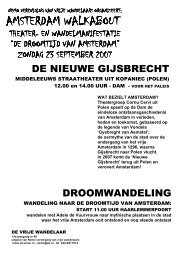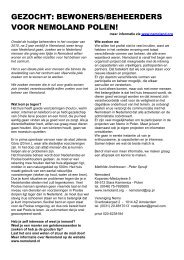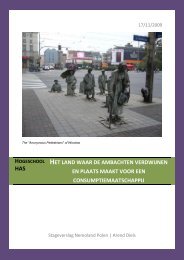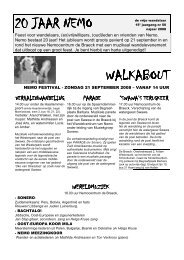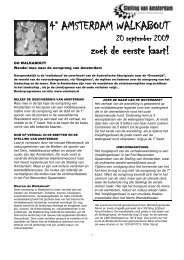Glashütten des Spätmittelalters im Isergebirge - Nemo
Glashütten des Spätmittelalters im Isergebirge - Nemo
Glashütten des Spätmittelalters im Isergebirge - Nemo
Sie wollen auch ein ePaper? Erhöhen Sie die Reichweite Ihrer Titel.
YUMPU macht aus Druck-PDFs automatisch weboptimierte ePaper, die Google liebt.
ecomes distinctly narrower and the top parts more rocky. Here Izerskie Garby (1088 m),<br />
Zwalisko (1047 m) and Wysoki Kamień (1058 m) stand out. Towards the east Wysoki Grzbiet<br />
easily subsi<strong>des</strong> towards Zbójeckie Skały (686 m) towards Górzyniec.<br />
Grzbiet Kamieniecki begins in the west with a lofty top of Sępia Góra (828 m) just above<br />
Świeradów Zdrój and then follows towards the east through Dłużec (867 m) and Kowalówka<br />
(888 m) from which an arm ending with Wygorzel (518 m) heads towards south. Grzbiet<br />
Kamieniecki through broad top of the tallest Kamienica (973 m) subsi<strong>des</strong> to Rozdroże Izerskie<br />
behind which it follows as a distinctive ridge through Jastrzębiec (792 m) and a number of<br />
smaller culminations till the shallow Babia Przełęcz (646 m). Behind Babia Przełęcz an isolated<br />
Ciemniak (699m ) rises subsiding through Bobrowe Skały towards Z<strong>im</strong>na Przełęcz (525 m).<br />
Geological structure<br />
The Polish part of Góry Izerskie belongs to the unit named Iser metamorphit which constitutes<br />
the north western shield of Variscan granite intrusion of Karkonosze-Iser block. It is composed<br />
of different types of metamorphic rocks: gneiss, clusters of granite and mica slate, created<br />
mainly during the Caledonian orogenesis. There are three basic types of gneiss categorized<br />
according to structural and textural features: gneiss, fine grained gneiss, and gneiss*. A<br />
separate category is composed of rumburski granite (called iser granite) occurring as lenses in<br />
gneiss. Locally leuko granite occurs as well. Within gneisses and granite-gneiss parallel narrow<br />
ranges of metamorphic mica slate occur. These ranges include: range of Szklarska Poręba<br />
constituting the eastern part of Wysoki Grzbiet and the range of Stara Kamienica extending<br />
from Wojcieszyce to the east through Kromnów, Stara Kamienica, Kwieciszowice, Gierczyn,<br />
Krobica till Czerniawa Zdrój in the west, constituting the northern slopes of Grzbiet<br />
Kamieniecki. Metamorphic slates occur in several varieties. Typical medium and coarsecrystalline<br />
mica slates occur in Grzbiet Kamieniecki. These are grey, silver grey and green grey<br />
slates muscovite-sericite-chlorite, locally enriched with biotite, garnet, rarely turmaline and<br />
disten*. Also cassiterite and sulphide minerals can be found here. Nodules and lenses of quartz<br />
and fluorite were discovered. Massive, thermically transformed and very resistant slates called<br />
hornfels* can be found in Wysoki Grzbiet in contact with Karkonosze granite, in a range 6 km<br />
long from Izerskie Graby till Zbójeckie Skały. The occurrence of veined quartz is connected to<br />
the complex of metamorphic rocks, mainly in the area of Świeradów Zdrój (Rozdroże Izerskie)<br />
and cassiterite in the area of Gierczyn-Krobica and cobalt in the area of Przecznica-Gierczyn.<br />
At the northern foot of Grzbiet Kamieniecki a tectonic fault follows (fault Kamienica-<br />
Rębiszów), active in the later Tertiary (neogea). The occurrence of basalt, mainly in the form<br />
of dikes is related to the fault.<br />
Mineral resources<br />
Precious but few mineral resources can be found in Góry Izerskie. In the whole range of<br />
Grzbiet Kamieniecki from the state border till Stara Kamienica area in the ore-bearing areas 1-<br />
5 m wide stannum ore occurs (Sn).These are mainly cassiterites (stannum oxide SnO)<br />
containing 0,15-0,6 % of pure metal. The traditions of stannum ore extraction in Gierczyn date<br />
back to the XV century. The mines were active with intervals till the end of XVIII century and<br />
in the most favourable period (end of XVII century) the production amounted to about 20 tons<br />
of stannum per year. In the beginnings of XIX century cassiterite was extracted also in<br />
Krobica. After the II World War an evaluation was made confirming the possibility to resume<br />
extraction. These deposits are connected also to cobalt ores. These are cobalt and arsenic<br />
sulphi<strong>des</strong> (smaltyn and safloryt*) and cobalt-manganese compounds extracted in the area of<br />
-48-



